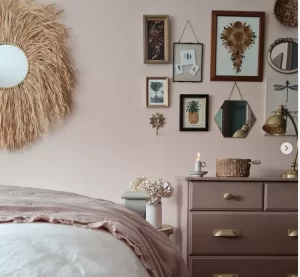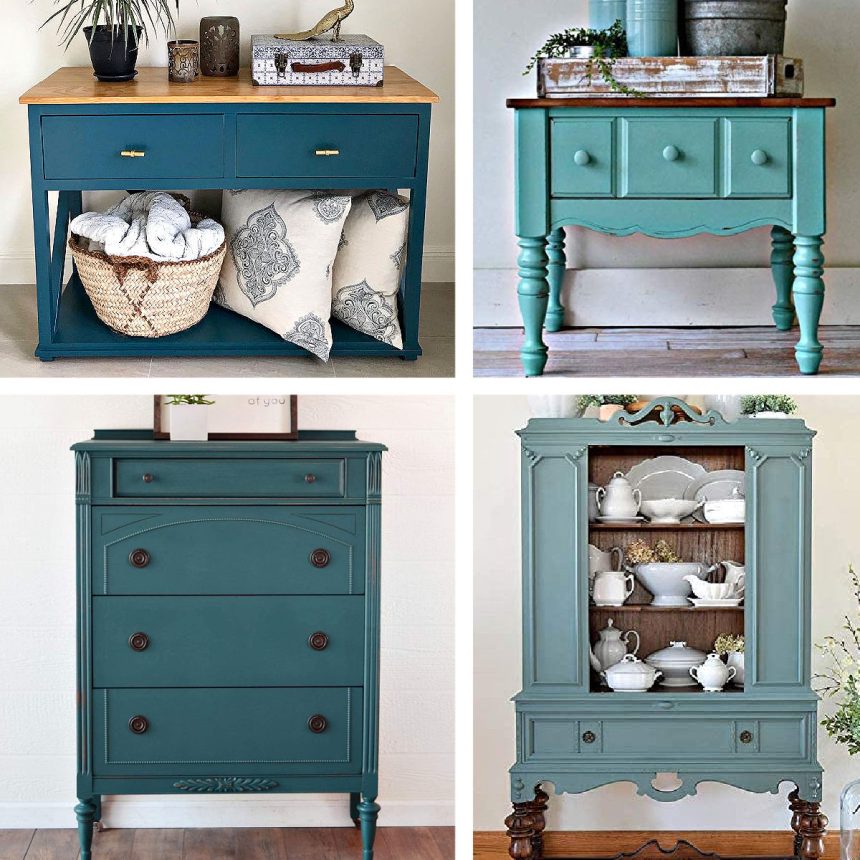Looking to breathe new life into your old furniture? Look no further! The best furniture paint is here to save the day. Whether you’re a seasoned DIY enthusiast or just starting out, furniture paint offers a world of possibilities.
Why settle for dull and worn-out furniture when you can unleash your creativity and transform it into something extraordinary? With a wide range of options available in the market, you can easily find the perfect furniture paint to suit your style and project needs.
Revitalizing your old furniture has never been easier. Say goodbye to outdated pieces and hello to stunning transformations. From vibrant colors that make a statement to subtle hues that add elegance, furniture paint allows you to showcase your personal flair effortlessly.
So why wait? Let’s dive into the world of best furniture paint and discover how it can turn your ordinary pieces into extraordinary works of art.
Beginner’s Guide: How to Paint Furniture

Preparing and Priming Your Furniture
Before diving into your furniture painting project, it is crucial to prepare the surface properly. Start by cleaning the furniture thoroughly to remove any dirt or grime. Use a mild soap solution and a soft cloth to gently wipe down all surfaces. Once clean, allow the furniture to dry completely before moving on.
Next, inspect the piece for any imperfections such as dents, scratches, or loose joints. Fill in these areas with wood filler and sand them down until smooth. This step ensures that your finished paint job will look flawless.
Once your furniture is prepped and repaired, it’s time to prime. Apply a coat of high-quality primer evenly across all surfaces using a brush or roller. Primer helps create an even base for the paint to adhere to and improves its durability. Allow the primer to dry completely according to the manufacturer’s instructions before proceeding.
Essential Techniques for Achieving a Professional Finish
To achieve a smooth and professional-looking finish on your painted furniture, there are several techniques you should employ:
- Brushing vs. Spraying: Decide whether you prefer brushing or spraying paint onto your furniture. Brushing gives you more control over the application but may leave visible brush strokes, while spraying provides a smoother finish but requires proper equipment.
- Thin Coats: Apply thin coats of paint rather than thick ones to avoid drips and uneven drying. Multiple thin coats will build up color gradually and result in a more polished appearance.
- Sand Between Coats: After each coat of paint has dried, lightly sand the surface with fine-grit sandpaper (e.g., 220 grit) to remove any imperfections and create a smooth texture for subsequent layers.
- Directional Painting: Always follow the grain of the wood when applying paint for a professional look that enhances the natural beauty of the furniture.
- Sealing the Paint: Consider applying a clear topcoat or sealant to protect your painted furniture from wear and tear. This extra step adds durability and longevity to your finished piece.
Selecting the Right Tools and Materials
Choosing the right tools and materials is essential for a successful furniture painting project. Here are some tips to help you make informed decisions:
- Paint Types: Select a paint specifically formulated for furniture, such as chalk paint, latex paint, or acrylic paint. Each type has its own advantages and finishes, so consider your desired outcome before making a choice.
- Brushes vs. Rollers: Decide whether brushes or rollers are better suited for your project. Brushes offer more control over details and intricate areas, while rollers cover large surfaces quickly and evenly.
- Sandpaper Grits: Have a variety of sandpaper grits on hand, ranging from coarse (e.g., 80 grit) for initial sanding to fine (e.g., 220 grit) for smoothing between coats.
- Protective Gear: Wear appropriate protective gear such as gloves, goggles, and a mask when handling paints, primers, or chemicals to ensure your safety.
By following these step-by-step instructions, mastering essential techniques, and selecting the right tools and materials for your furniture painting project, you’ll be well on your way to transforming old pieces into stunning works of art.
Top Furniture Paints Comparison (2023)
Are you looking to give your old furniture a fresh new look? Choosing the right furniture paint is essential for achieving a beautiful and long-lasting finish. With so many options available, it can be overwhelming to make a decision. We also explore which brands offer eco-friendly and low VOC options for a healthier home environment. We delve into customer reviews to help you make an informed decision when choosing a furniture paint.
Durability
Durability is key. You want your newly painted piece to withstand daily wear and tear without chipping or peeling. Several brands excel in providing durable finishes that stand the test of time:
- Brand A offers a range of furniture paints known for their exceptional durability. They are specifically formulated to resist scratches and stains, making them perfect for high-traffic areas.
- Brand B prides itself on its long-lasting furniture paint that provides excellent adhesion and resistance against fading. Their products are designed to withstand both indoor and outdoor use.
- Brand C has gained popularity among DIY enthusiasts due to its ultra-durable furniture paint formula. It creates a hard-wearing finish that remains intact even with frequent use.
Coverage
Achieving good coverage with minimal coats of paint not only saves time but also ensures a professional-looking result. Here are some top contenders known for their excellent coverage:
- Brand X offers highly pigmented furniture paints that provide superb coverage even on dark or previously painted surfaces.
- Brand Y boasts a unique formulation that allows their furniture paint to cover large areas with just one coat, saving you time and effort.
- Brand Z has developed a revolutionary formula that guarantees full coverage in just two coats, regardless of the original color or material of the furniture.
Color Options
Finding the perfect color for your furniture can completely transform its appearance. The following brands offer a wide range of color options to suit any style or preference:
- Brand P provides an extensive selection of trendy and classic colors, allowing you to customize your furniture to match your desired aesthetic.
- Brand Q specializes in offering unique and vibrant shades that add personality and flair to your painted furniture.
- Brand R understands the importance of versatility and offers a comprehensive palette, including neutral tones, bold hues, and everything in between.
Eco-Friendly Options
For those who prioritize sustainability and a healthier home environment, several brands have introduced eco-friendly furniture paints with low VOC (volatile organic compounds) content:
- Brand M is committed to producing environmentally friendly paints that are free from harmful chemicals. Their low VOC formulas ensure minimal emissions during application and drying.
- Brand N has developed a line of eco-conscious furniture paints that not only reduce environmental impact but also provide excellent coverage and durability.
- Brand O offers a range of water-based furniture paints with low VOC content. These paints are not only safer for the environment but also emit fewer odors during application.
Best Furniture Paints without Sanding
Discover alternative methods to achieve excellent adhesion without sanding your furniture.
If you’re looking to give your furniture a fresh new look but don’t want to go through the hassle of sanding, you’re in luck. There are several innovative furniture paints available that allow you to skip the time-consuming sanding step while still achieving excellent results. These paints offer great adhesion and can be applied directly to various surfaces, saving you both time and effort.
One popular option is chalk paint. Chalk paint is known for its ability to adhere well to different surfaces, including wood, metal, and even plastic. It has a unique formula that eliminates the need for sanding by providing exceptional coverage and adhesion. With chalk paint, you can easily transform your furniture into a stunning centerpiece without any prior sanding.
Another alternative method is using bonding primers or adhesion promoters. These products are specifically designed to enhance the bond between the surface and the paint, ensuring long-lasting durability. Bonding primers work effectively on various materials like laminate, melamine, or previously painted surfaces. By applying a bonding primer before painting, you can achieve excellent adhesion without the need for sanding.
Self-leveling paints are also worth considering if you want a smooth finish on uneven surfaces. These paints have a unique formulation that allows them to level out as they dry, resulting in a flawless finish even on bumpy or textured furniture pieces. Self-leveling paints are ideal for achieving professional-looking results without spending hours sanding down imperfections.
In addition to these alternative methods, there are also specialized paints available for specific materials such as metal or laminate furniture:
- Metal Paints: If you have metal furniture that needs a makeover, there are paints formulated specifically for metal surfaces. These paints offer superior adhesion and durability on metals like iron or aluminum.
- Laminate Paints: Laminate furniture can be tricky to paint, but there are paints designed specifically for this purpose. These paints have special adhesion properties that ensure proper bonding with laminate surfaces, eliminating the need for sanding.
By exploring these alternative methods and innovative formulas, you can save time and effort while still achieving a professional-looking finish on your furniture. Whether you choose chalk paint, bonding primers, self-leveling paints, or specialized options for specific materials, you can confidently skip the sanding step and enjoy the process of transforming your furniture into something beautiful.
Step-by-Step Instructions for Painting Furniture
Are you looking to give your old furniture a fresh new look? With the right techniques and materials, painting furniture can be a fun and rewarding project. In this guide, we will walk you through the step-by-step process of prepping, painting, and sealing your furniture to achieve the best results. Along the way, we’ll also share tips on avoiding common mistakes that could ruin your hard work.
Prepping Your Furniture
Before diving into the painting process, it’s crucial to properly prepare your furniture. Start by cleaning the surface with a mild detergent or vinegar solution to remove any dirt or grime. Once cleaned, sanding is essential to create a smooth base for the paint to adhere to. Use medium-grit sandpaper to lightly sand the entire surface, focusing on any rough areas or imperfections.
Choosing the Right Paint and Tools
Consider factors such as durability, finish options, and ease of application. Chalk paint is a popular choice due to its versatility and ability to adhere well without extensive priming. Acrylic latex paint is another excellent option as it dries quickly and provides a durable finish.
As for tools, invest in quality brushes that are appropriate for your chosen paint type. A high-quality synthetic bristle brush works well with latex paints while natural bristle brushes are ideal for oil-based paints. Gather other supplies like painter’s tape, drop cloths or newspapers to protect surrounding surfaces from accidental drips or spills.
Applying the Paint
Now that your furniture is prepped and you have all your supplies ready let’s dive into applying the paint! Begin by applying a thin coat of primer if needed; this step ensures better adhesion and coverage of subsequent layers of paint.
Once the primer has dried (usually within 24 hours), it’s time to apply your chosen color. Use long, smooth brush strokes in the direction of the wood grain for a professional finish. If you want to experiment with different colors or create a distressed look, consider blending colors by dry brushing or layering multiple coats.
Sealing and Protecting Your Furniture
To protect your newly painted furniture from everyday wear and tear, it’s crucial to seal it properly. Apply a clear topcoat such as polyurethane or wax using a clean brush or cloth. This step not only provides added durability but also enhances the overall appearance of your piece.
Avoiding Common Mistakes
While painting furniture can be an enjoyable process, it’s essential to steer clear of common mistakes that could ruin your hard work. Some pitfalls to avoid include:
- Rushing the prep work: Take your time to thoroughly clean and sand the furniture surface.
- Skipping primer: Unless using chalk paint, applying primer ensures better adhesion and coverage.
- Overloading paint on brushes: Excess paint can lead to drips and uneven finishes.
- Neglecting proper drying time: Allow each coat of paint or sealer to dry completely before applying subsequent layers.
By following these step-by-step instructions and avoiding common mistakes, you’ll be well on your way to transforming your old furniture into stunning pieces that breathe new life into your space. So grab your brushes, choose the perfect paint color, and let your creativity shine!
Tips and Techniques for Painting Furniture
Advanced Techniques to Add Interest
Why settle for a plain and simple look when you can elevate it with advanced techniques? One way to enhance your painted furniture is through color layering. By applying multiple layers of paint in different shades, you can create depth and dimension, giving your piece a unique and eye-catching appearance. Experiment with complementary or contrasting colors to achieve the desired effect.
Another technique that can bring visual interest to your furniture is dry brushing. This method involves using a dry brush with minimal paint on it to create a textured or weathered look. Lightly dragging the brush over the surface will leave subtle streaks of color, adding character and charm to your piece. Dry brushing works particularly well on pieces with intricate details or carvings as it highlights these features beautifully.
If you’re feeling adventurous, consider using stencils to add patterns or designs to your painted furniture. Stenciling allows you to personalize your piece by incorporating intricate motifs or geometric shapes onto its surface. Whether you opt for floral patterns, chevron stripes, or Moroccan-inspired designs, stenciling offers endless possibilities for creating a truly one-of-a-kind statement piece.
Achieving a Distressed or Vintage Look
For those who appreciate the charm of distressed or vintage-style furniture, there are various distressing methods that can help you achieve this aesthetic. One popular technique is sandpaper distressing. By strategically sanding certain areas of your painted furniture after it has dried, you can simulate the wear and tear that naturally occurs over time. Focus on edges, corners, and areas where natural wear would typically appear.
Another method is the use of crackle medium. This product creates a cracked finish on the surface of your painted furniture by causing the topcoat of paint to shrink while drying. The cracks reveal glimpses of the base coat underneath, resulting in an aged and weathered appearance. Experiment with different color combinations to achieve the desired vintage effect.
Proper Cleaning and Maintenance
Once you’ve successfully transformed your furniture with paint, it’s essential to know how to properly clean and maintain it for long-lasting results. Regular dusting with a soft cloth or feather duster will help keep your painted furniture looking its best. Avoid using abrasive cleaners or harsh chemicals as they can damage the paint finish.
In case of spills or stains, promptly clean them up using a mild detergent solution and a soft cloth. Gently blot the affected area without rubbing, as this could remove the paint. If necessary, consider applying a thin layer of clear wax or polyurethane to protect the painted surface from everyday wear and tear.
By following these tips and techniques for painting furniture, you can unleash your creativity and transform ordinary pieces into extraordinary works of art. Whether you prefer advanced techniques like color layering and stenciling or aim for a distressed or vintage look, there are endless possibilities. Remember to take proper care of your painted creations to ensure their longevity and enjoy the fruits of your labor for years to come.
Choosing the Perfect Furniture Paint
Choosing the right paint can make all the difference. Whether you’re upcycling an old piece or transforming a thrift store find, selecting the best furniture paint is essential for achieving the desired result. Here are some key factors to consider when choosing the perfect furniture paint.
Surface Type Matters
Before diving into the world of furniture paints, it’s important to take into account the surface type you’ll be working with. Different materials require different types of paint for optimal results. For wooden surfaces, acrylic latex or oil-based paints tend to work well due to their durability and ability to adhere effectively. On the other hand, metal surfaces may benefit from enamel spray paints that provide excellent coverage and resistance against rust. If you’re planning on painting laminate furniture, look for paints specifically formulated for this surface type as they offer better adhesion and longevity.
The Finish: Matte vs. Glossy
Another crucial consideration when selecting furniture paint is deciding on the desired finish – matte or glossy. Each has its own unique appeal and characteristics that can significantly impact the overall look of your piece. Matte finishes give off a more subtle and understated vibe while providing excellent coverage for imperfections on older furniture. On the other hand, glossy finishes create a sleek and polished appearance that adds a touch of elegance to any room. Ultimately, your choice between matte and glossy will depend on personal preference and how you envision your revamped furniture fitting into your space.
Exploring Color Range
Choosing the right color is undoubtedly one of the most exciting parts of any painting project.There is an extensive range of colors available in various shades and tones to suit every taste and style preference. Before making a decision, consider how different colors will complement your existing decor or if you want your newly painted piece to serve as an eye-catching statement in the room. It’s always a good idea to test out sample swatches on a small area of your furniture to see how the color looks in different lighting conditions before committing to a particular shade.
Specialty Paints for Specific Effects
If you’re looking to achieve specific effects or finishes, there are specialty paints designed just for that purpose. Chalk paint, for instance, has gained popularity due to its ability to create a vintage, distressed look with ease. This type of paint adheres well to various surfaces and requires minimal prep work. Metallic finishes, on the other hand, add a touch of glamour and sophistication by giving furniture pieces a metallic sheen reminiscent of precious metals like gold or silver. These specialty paints offer endless possibilities for creativity and can transform ordinary furniture into extraordinary statement pieces.
By considering factors such as surface type, desired finish, color range, and exploring specialty paints, you can confidently choose the best furniture paint for your next project. Remember to follow proper preparation techniques and application instructions provided by the manufacturer for optimal results. With the right paint in hand, you’ll be well on your way to transforming your furniture into stunning works of art that breathe new life into your living space.
Conclusion
In conclusion, painting furniture can be a fun and rewarding DIY project. Whether you’re a beginner or have some experience, there are plenty of options available to help you achieve the best results. By following the step-by-step instructions provided in this guide and using the right furniture paint, you can transform your old pieces into beautiful and customized creations.
To recap, we discussed the top furniture paints for 2023, including options that don’t require sanding. We also provided tips and techniques to enhance your painting skills and shared insights on choosing the perfect furniture paint for your needs.
Remember to consider factors such as durability, coverage, color range, and ease of application when selecting a furniture paint. It’s important to choose high-quality products from reputable brands to ensure long-lasting results.
Now that you have all the information you need, it’s time to get started on your own furniture painting project! Don’t be afraid to experiment with different colors and techniques to create unique designs that reflect your personal style.
So go ahead, grab your brushes and rollers, pick out your favorite furniture paint, and let your creativity flow!
Frequently Asked Questions about Furniture Painting
Can I paint over varnished wood without sanding?
Yes! There are specially formulated primers available that allow you to skip the sanding process when painting over varnished wood. These primers provide excellent adhesion and help create a smooth surface for the new paint to adhere to.
How long does it take for painted furniture to dry?
The drying time of painted furniture depends on various factors such as humidity levels, temperature, type of paint used, and thickness of application. In general, most paints require at least 24 hours to dry completely before handling or applying additional coats.
Do I need to seal painted furniture?
While not always necessary, sealing painted furniture can provide added protection against wear and tear. Applying a clear topcoat or furniture wax can help protect the paint from scratches, stains, and fading, ensuring its longevity.
Can I use regular wall paint on furniture?
While it is possible to use regular wall paint on furniture, it’s not recommended. Wall paints are designed for vertical surfaces and may not provide the same durability and adhesion as paints specifically formulated for furniture. It’s best to choose a high-quality furniture paint for optimal results.
How do I clean painted furniture?
To clean painted furniture, use a mild soap and water solution or a gentle household cleaner. Avoid using abrasive cleaners or scrub brushes that can damage the paint finish. Gently wipe the surface with a soft cloth or sponge, then rinse thoroughly and allow it to dry completely.
These are just a few of the common questions people have about painting furniture. If you have any more specific inquiries or need further assistance, feel free to reach out to our team of experts who will be happy to help you with your project.
Happy painting!


